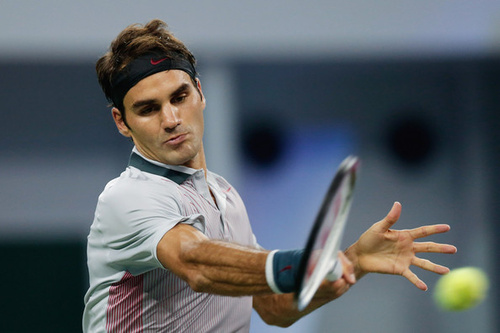Don't miss any stories → Follow Tennis View
FollowViewpoint: Roger Federer Struggling to Treat Triumph and Disaster the Same
If you can meet with Triumph and Disaster
And treat those two impostors just the same;
The words of Rudyard Kipling stand near the entrance to Wimbledon’s Centre Court, words that Roger Federer has undoubtedly read countless times.
So far, Federer has not treated triumph and disaster the same way. For the most part, he has only dealt with triumph. The greatest player in tennis history has compiled a long list of titles and records. To be sure, Federer suffered some painful losses at his peak to Rafael Nadal, but predominantly he has dominated the ATP Tour.

Disaster has become much more real for Federer only lately. In 2012, he achieved many significant goals such as winning Wimbledon and returning to world No. 1. The best of 2013 also came in the first six months of the year with the Australian Open semifinals, French Open quarterfinals, and his lone ATP triumph in Halle.
Since then, a deluge of setbacks has descended as Federer has started to experience the life of a mere mortal. These have ranged from his failed experiment with a larger racket to questionable scheduling decisions such as entering two clay tournaments after Wimbledon. But most notable are his surprise losses to underdogs who never would have challenged him before: Sergiy Stakhovsky, Federico Delbonis, Daniel Brands, Tommy Robredo. Most recently, a faded Gael Monfils outlasted Federer in Shanghai.
If Federer observers struggle to know what to make of his sharp decline, the journeymen of the ATP must feel equally astonished. They have shown themselves eager to capitalize on his lost air of invincibility, to their credit. They know that they can take advantage of moments when Federer might second-guess himself on a big point, hold back on a second serve or go easy on a put away.
A number of players in the past have fallen from glory only to again rise above the expectations of the critics. Andre Agassi dropped to world No. 141 in 1997 then somehow recovered to reclaim world No. 1 by 1999. Current veteran Tommy Haas dropped out of the top 200 as recently as 2011 but now stands at world No. 12, still competing valiantly at age 35. Putting Federer in perspective against those parallels, a skid outside the top five to the lower echelon of the top 10 seems less shocking.
Finding motivation after so many victories may grow more difficult for Federer as he ages. For Roger to falter is so hard for us to comprehend. He is what Ali is to boxing, Jordan to basketball and Pele to soccer: not only a champion, but also the living symbol of his sport. Paul Annacone, Federer’s recently dismissed coach, stated lately that the Swiss star may need to hear a new voice. Perhaps this is a good time for Federer to trust his own thoughts or at least remember how to find his own sources of motivation from within. With a fight for London looming, he still has an opportunity to finish 2013 in style before resetting for a pivotal campaign in 2014.










